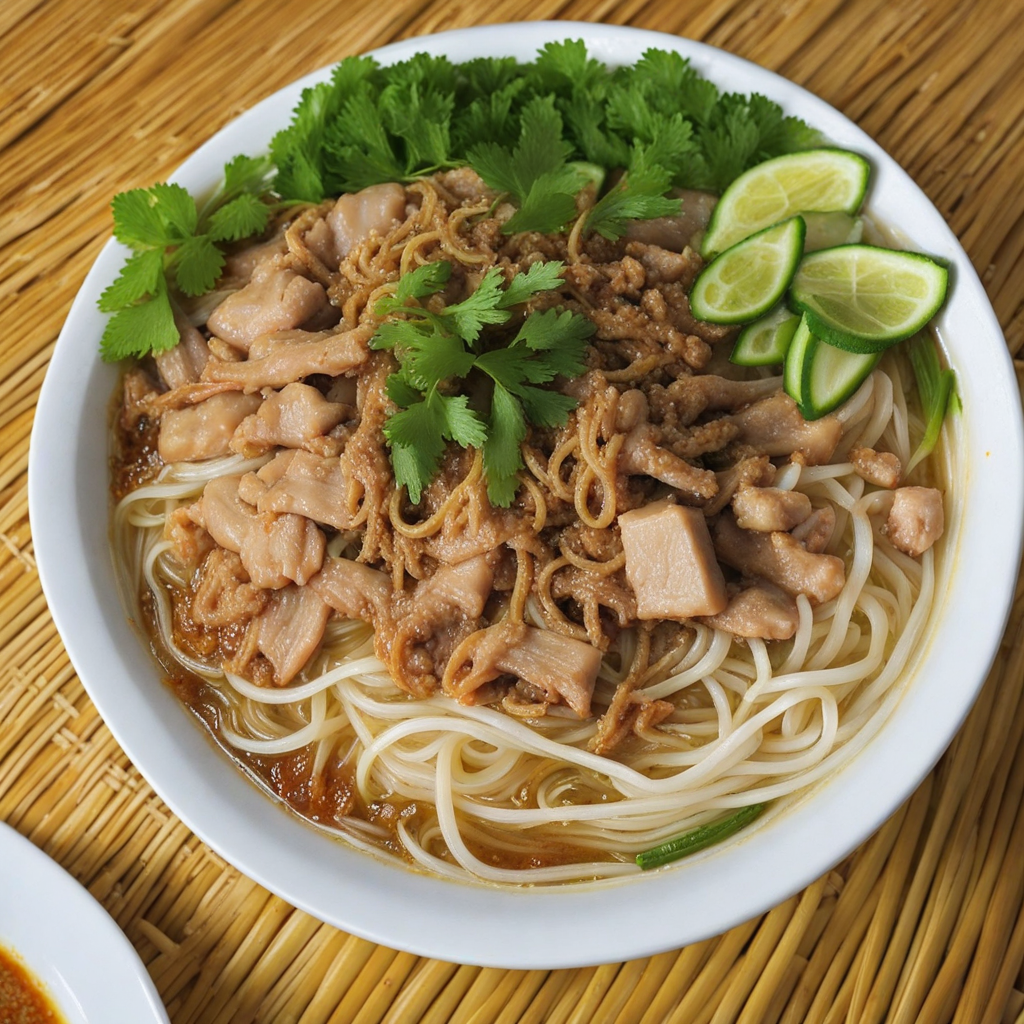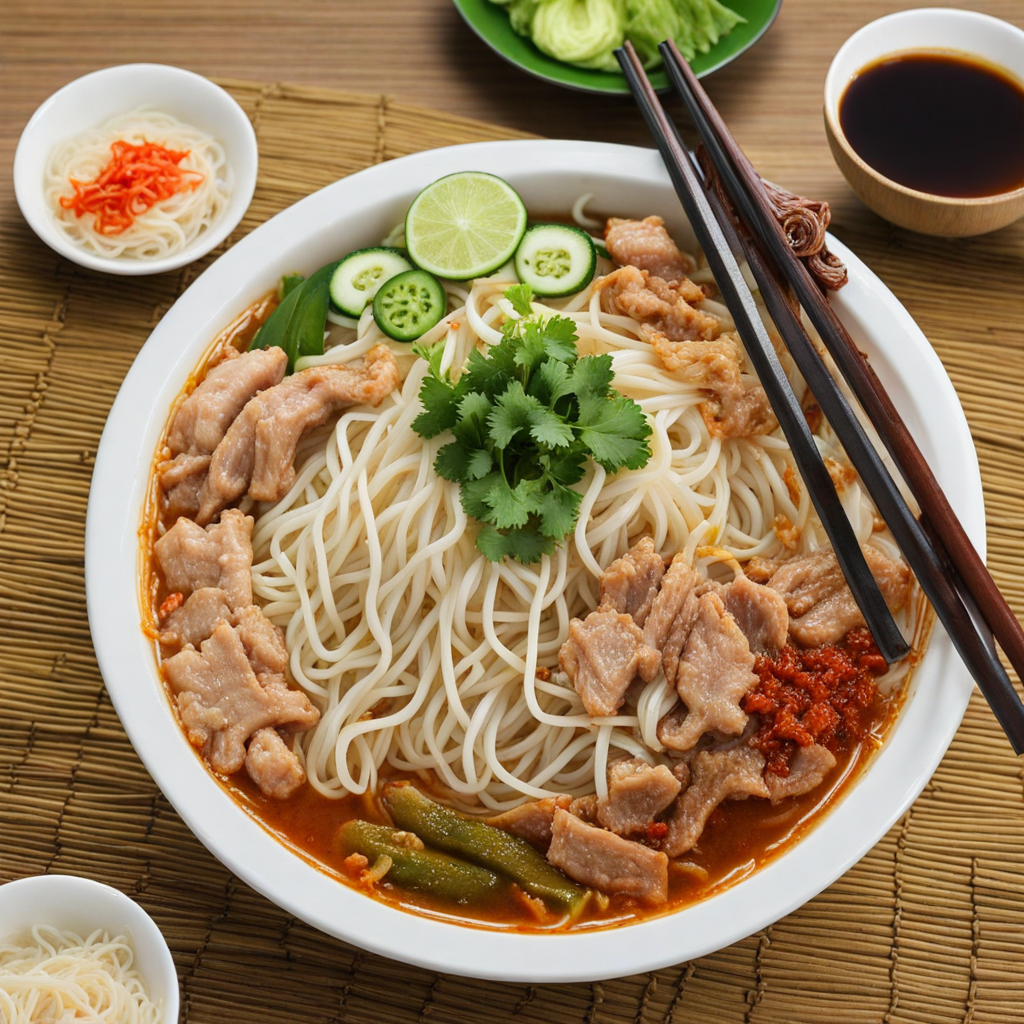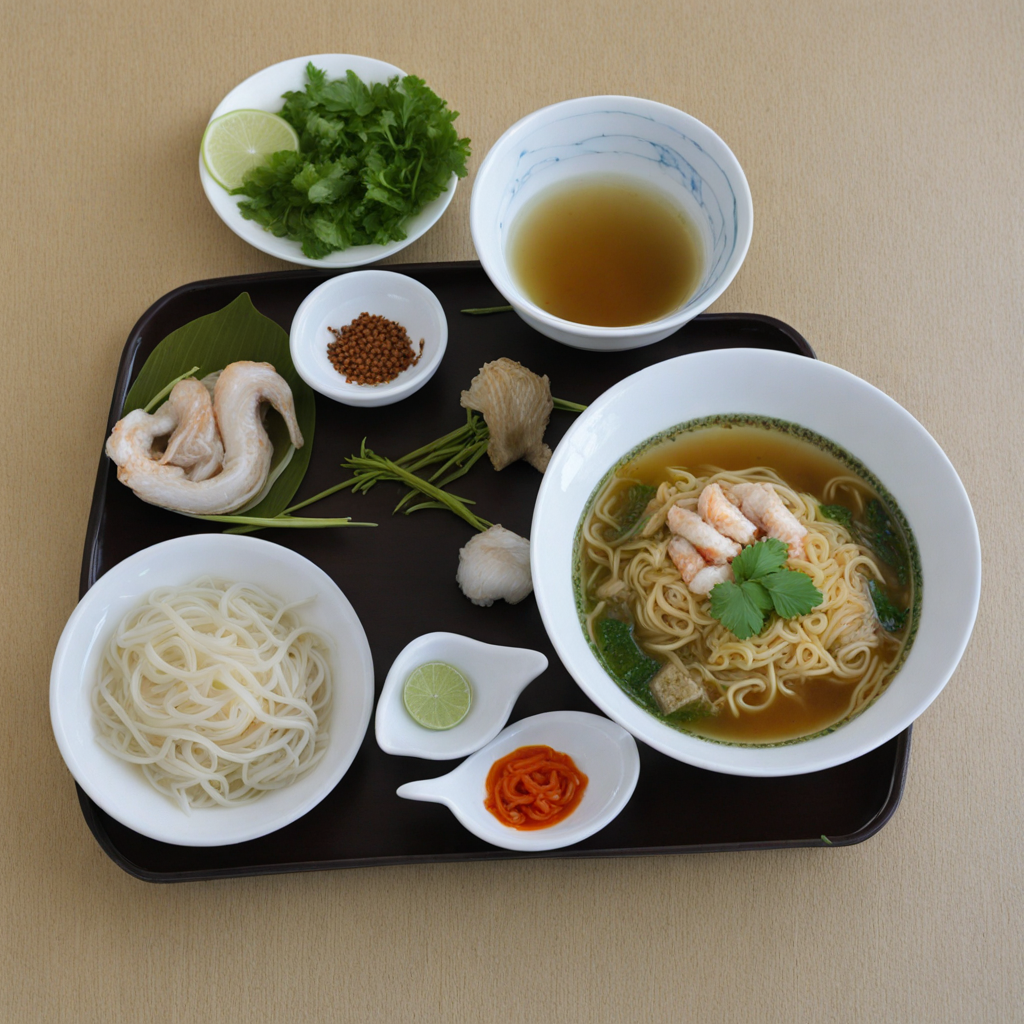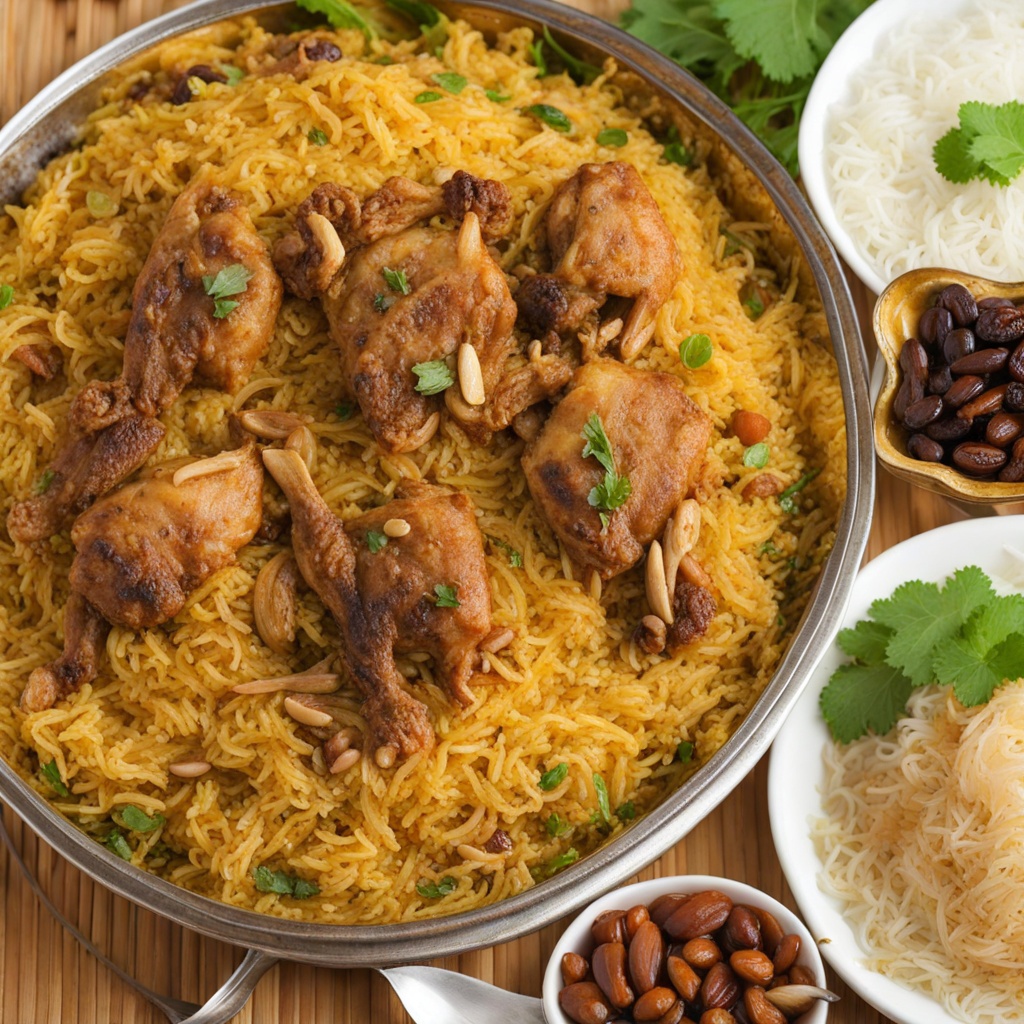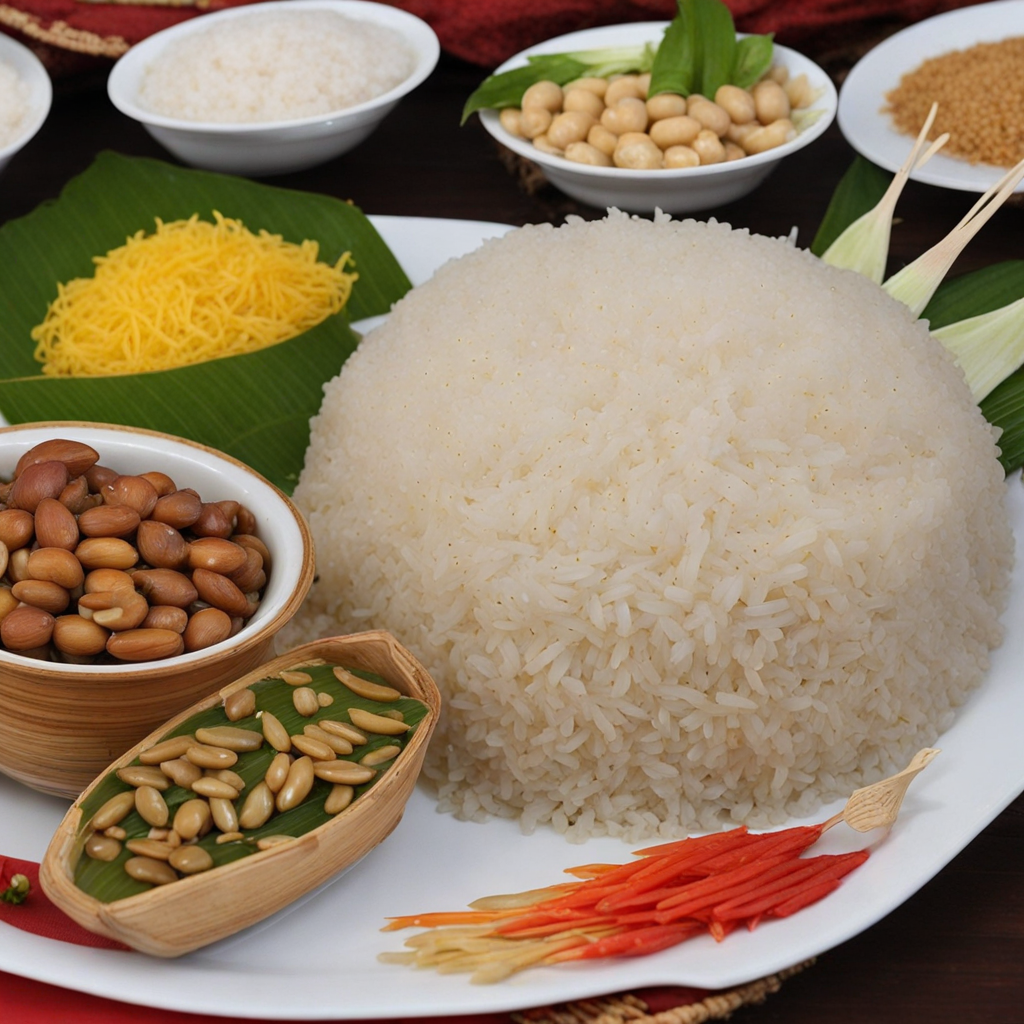Mandalay Mee Shay
Mandalay Mee Shay is a tantalizing noodle dish hailing from the vibrant culinary landscape of Myanmar, particularly from the city of Mandalay. The dish features thick rice noodles that are slightly chewy, providing a delightful texture that complements the robust flavors of its sauce. The noodles are typically served in a rich broth that is savory and aromatic, often infused with spices like garlic, chili, and turmeric, giving it a warm, inviting aroma that beckons food lovers to indulge in its unique taste. The combination of the noodles and the fragrant broth creates a comforting base that sets the stage for the dish's other elements.
How It Became This Dish
The History of Mandalay Mii Shwe (မန္တလေးမီးရှည်): A Culinary Journey Through Time and Culture Mandalay Mii Shwe, a beloved dish from Myanmar, is more than just a meal; it is a reflection of the rich tapestry of the nation’s history, culture, and culinary evolution. This rice noodle dish, characterized by its unique flavors and textures, holds a special place in the hearts of the Burmese people, particularly in the Mandalay region. To understand its significance, we must delve into its origins, cultural relevance, and the changes it has undergone over time. Origins: The Heart of Mandalay The history of Mandalay Mii Shwe can be traced back to the late 19th century, during the reign of King Mindon Min, who established Mandalay as the last royal capital of Myanmar. The city became a melting pot of cultures, with influences from neighboring regions such as India, China, and Thailand, as well as indigenous flavors. The dish itself is a testament to this blending of culinary traditions. Mii Shwe, which translates to "oil noodles," is made with rice flour, creating delicate noodles that are often served with a variety of toppings. The dish typically features a rich, aromatic broth made from a complex interplay of spices, including turmeric, garlic, and ginger, which reflects the flavors of the region. The addition of meat, often chicken or pork, along with fresh vegetables and herbs, further enhances the dish's profile, making it both hearty and satisfying. Cultural Significance: More Than Just Nourishment Mandalay Mii Shwe is not only cherished for its taste but also for its cultural significance. It is often served during festivals, family gatherings, and special occasions, symbolizing unity and celebration. The preparation of Mii Shwe can be a communal activity, bringing families and friends together, reinforcing social bonds and shared traditions. In Myanmar, food has long been a medium for storytelling and cultural exchange. Mii Shwe embodies the spirit of hospitality, as it is commonly offered to guests, showcasing the host’s generosity and culinary skills. Eating Mii Shwe is more than a physical act; it is an experience that connects people to their heritage and each other. Development Over Time: Evolution and Adaptation As Mandalay Mii Shwe gained popularity, it underwent various adaptations, reflecting the changes in society and the culinary landscape. In the early 20th century, with the rise of urbanization and the influx of migrants into Mandalay, the dish began to evolve. Street vendors and local eateries started to offer their unique takes on Mii Shwe, introducing new ingredients and cooking methods. The availability of different meats, such as duck and beef, became more common, and vegetarian versions emerged as the demand for diverse dietary options increased. The use of condiments, such as chili oil, pickled vegetables, and roasted peanuts, added layers of flavor and texture, appealing to a wider audience. This adaptability allowed Mandalay Mii Shwe to remain relevant amidst changing tastes and preferences. The global spread of Burmese cuisine in recent decades has further influenced the dish. As the diaspora community expanded, Mii Shwe found its way into international markets, where chefs and food enthusiasts began to experiment with its components. Fusion dishes emerged, combining traditional Mii Shwe with elements from other cuisines, showcasing its versatility. Modern Perspectives: A Global Culinary Icon In the 21st century, Mandalay Mii Shwe has transcended its regional roots, gaining recognition as a culinary icon of Myanmar. It is often featured in food festivals and cultural events, drawing attention to the rich heritage of Burmese cuisine. Many restaurants, both in Myanmar and abroad, have embraced Mii Shwe, offering it as a staple on their menus, thus introducing this delightful dish to a global audience. Social media has played a significant role in the resurgence of interest in Mandalay Mii Shwe. Food bloggers and influencers showcase the dish, sharing recipes and personal stories, helping to elevate its status as a beloved comfort food. The visual appeal of Mii Shwe, with its vibrant colors and intricate presentation, has made it a popular subject for photography, further enhancing its visibility. In addition to its culinary appeal, Mandalay Mii Shwe carries a narrative of resilience and cultural pride. As Myanmar faces various challenges, food remains a source of comfort and continuity for its people. The act of preparing and sharing Mii Shwe becomes a way for individuals to connect with their heritage, celebrate their identity, and maintain a sense of hope. Conclusion: A Culinary Legacy Mandalay Mii Shwe stands as a testament to the enduring power of food as a cultural connector. Its origins in the royal city of Mandalay, its evolution through the influences of migration and globalization, and its modern-day prominence reflect the dynamic nature of Myanmar's culinary heritage. As Mandalay Mii Shwe continues to capture the hearts and palates of people around the world, it serves as a reminder of the stories and traditions that shape our relationship with food. Each bowl of Mii Shwe tells a story of history, culture, and community, inviting us to partake in a shared legacy that transcends borders and generations. In every strand of noodle lies the essence of Myanmar, waiting to be savored and celebrated.
You may like
Discover local flavors from Myanmar


